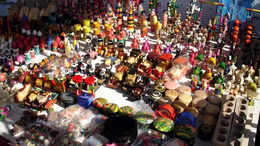A quick guide to cell service in European countries and how to always remain in network
Times of IndiaTIMESOFINDIA.COM/ Created : Jul 8, 2024, 14:00 IST
You're Reading

A quick guide to cell service in European countries and how to always remain in network 
Tiger captured in Wayanad finds new home at Thiruvananthapuram Zoo, Kerala 
Highest camp at Mount Everest littered with frozen garbage and human remains; cleanup might take years 
Odisha Police seeks AI-help to control traffic during Jagannath Rath Yatra 2024 in Puri
Synopsis
Likewise, while travelling abroad or Europe, it’s equally important to stay connected for communication, and accessing information. However, when it comes to international destinations, you need to be aware of their services and o … Read more
Likewise, while travelling abroad or Europe, it’s equally important to stay connected for communication, and accessing information. However, when it comes to international destinations, you need to be aware of their services and other information. Read less

Understanding cell service in Europe

Roaming agreements: European countries have extensive roaming agreements, making it relatively easy to maintain service while moving between nations. The European Union has abolished roaming charges within member states, allowing you to use your domestic plan in other EU countries without extra fees. However, this may not apply to non-EU countries, so check your provider’s policies.
Read more: 5 easy tips to save money for your upcoming trip
Network coverage: Major European cities and tourist areas have excellent network coverage, including 4G LTE and increasingly 5G. Rural and remote areas may have weaker signals, but most regions are still accessible with at least 3G service.
Preparing before you travel
Check with your carrier: Before leaving, contact your mobile carrier to understand international roaming options. Many carriers offer international plans that include data, calls, and texts. These plans can be convenient, but might be more expensive than local alternatives.Unlock your phone: Ensure your phone is unlocked, meaning it’s not restricted to a specific carrier. This allows you to use local SIM cards, which can be a cost-effective option.
Research local SIM cards: Each country has multiple mobile providers offering prepaid SIM cards. Research the best providers in your destination for coverage and pricing. Popular European providers include Vodafone, Orange, and T-Mobile.
Staying connected on arrival

eSIM options: Many modern smartphones support eSIMs, allowing you to download a digital SIM card. You will find providers that offer eSIMs for multiple European countries, eliminating the need to switch physical SIM cards.
Portable Wi-Fi hotspots: Another option is renting or purchasing a portable Wi-Fi hotspot. These devices provide internet access for multiple devices and can be a good choice for group travel.
Tips for always staying in network
Use Wi-Fi whenever possible: Take advantage of free Wi-Fi in hotels, cafes, and public spaces to save on data usage. Ensure the Wi-Fi network is secure before connecting.Monitor data usage: Keep track of your data usage to avoid unexpected charges. Many smartphones allow you to set data limits and alerts.
Backup communication apps: Install apps like WhatsApp, Skype, which use internet data for calls and messages. These apps can be lifesavers if you run out of mobile data.
Read more: Places with namesakes: 5 global locations sharing names with iconic Indian cities
Emergency contacts and offline maps: Save important contacts and download offline maps (e.g., Google Maps) before your trip. This ensures you can navigate even without a data connection.
Consider dual SIM phones: If your phone supports dual SIMs, you can keep your home SIM for emergency calls and use a local SIM for data and local calls.
Plan for non-EU countries: If travelling to non-EU countries, check roaming charges and consider local SIM options to avoid high fees.

Refrain from posting comments that are obscene, defamatory or inflammatory, and do not indulge in personal attacks, name calling or inciting hatred against any community. Help us delete comments that do not follow these guidelines by marking them offensive. Let's work together to keep the conversation civil.
closecomments
Refrain from posting comments that are obscene, defamatory or inflammatory, and do not indulge in personal attacks, name calling or inciting hatred against any community. Help us delete comments that do not follow these guidelines by marking them offensive. Let's work together to keep the conversation civil.
Popular Galleries
Trending Stories
Hyderabad Airport issues travel advisory after Microsoft global outage; 23 flights cancelled
Microsoft global outage: Airports at Delhi, Jaipur, Hyderabad, Mumbai severely affected
Lesser-known natural phenomena worth travelling for
This man breaks world record by visiting 7 wonders of the world in under 7 days
Paris 2024 Olympics: A look at iconic landmarks hosting the events




























Comments (0)